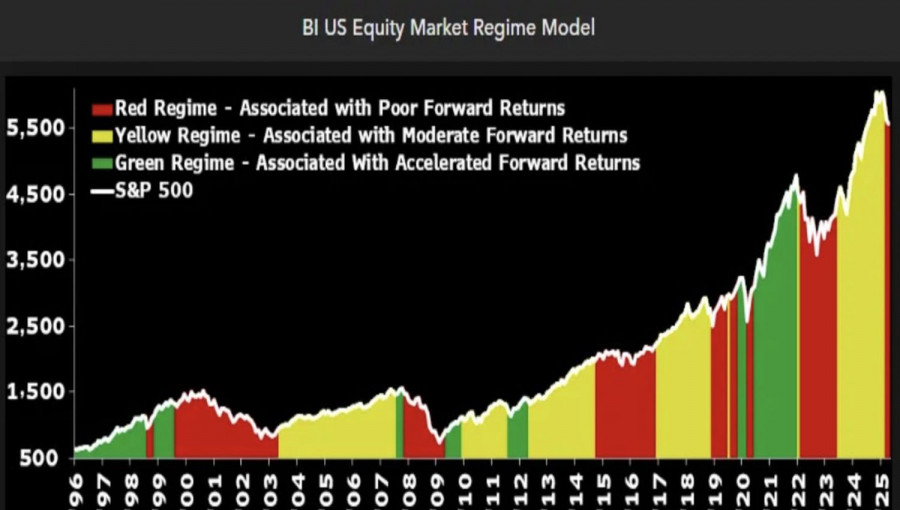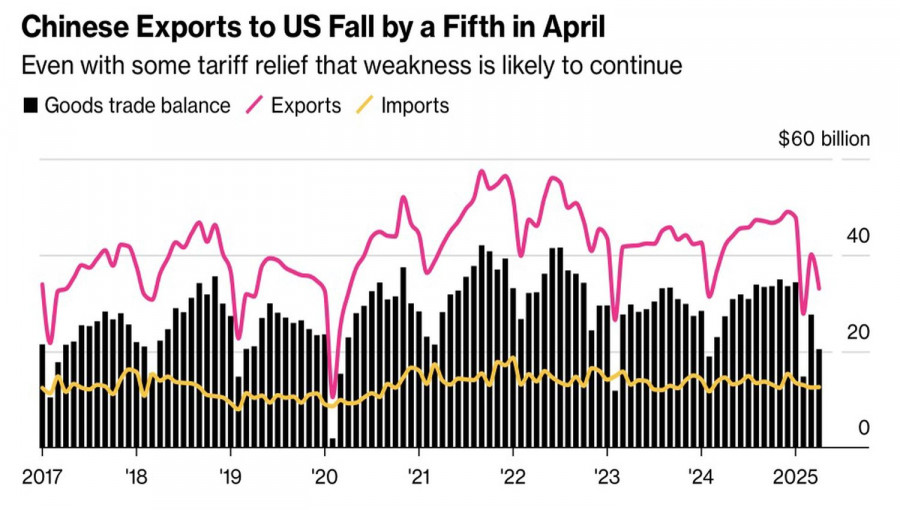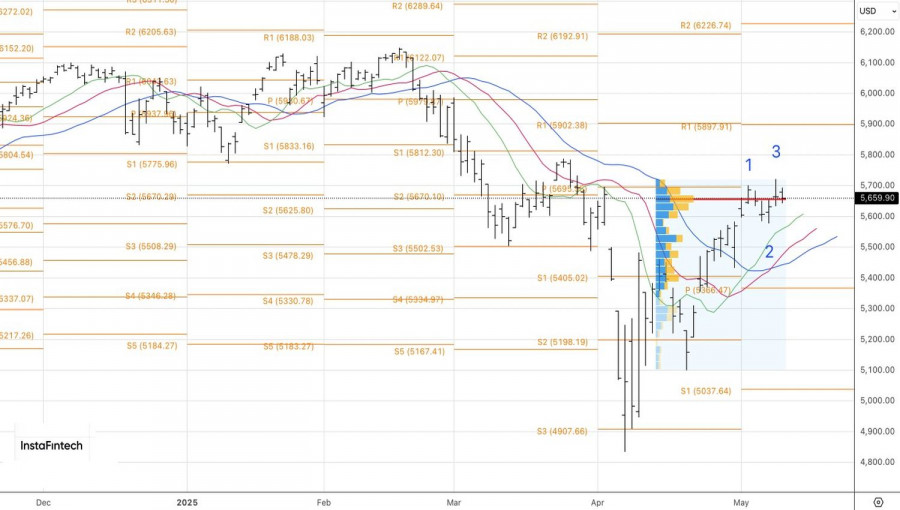See also


 12.05.2025 09:18 AM
12.05.2025 09:18 AMHow quickly things change on the financial markets! Before America's Liberation Day, investors viewed the 10% universal import tariff as disastrous. Now, it's seen as the most favorable option. The S&P 500 has climbed 14% from its April lows, erasing all losses since the imposition of the highest U.S. tariffs since the early 20th century. But is this justified, considering the tariff burden remains at very high levels despite being reduced?
Most of the spring rally in the S&P 500 was emotionally driven. Investors were buying the rumor that the April 2 tariffs were the peak and would soon be lowered, making it an "ideal" time to buy stocks. According to Bank of America, the time has come to "sell the fact," meaning the upward movement of the broad equity index is likely over.
This is supported by Bloomberg's model tracking S&P 500 corporate earnings, which has now moved into the red zone, indicating a potential deterioration in financial results. Historically, this does not bode well for equities. In seven previous cases when the index entered the red zone, the S&P 500 dropped by an average of 5.6% over the following 12 months.
This seems quite plausible. Donald Trump believes that reducing tariffs on Chinese imports from 145% to 80% would be "fair"—but only if China reopens access to its markets for U.S. companies. According to Bloomberg, S&P 500 companies on average earn 6.1% of their revenue from selling goods in China or to Chinese companies. Beijing's 125% retaliatory tariffs would significantly worsen their financial performance.
Bilateral trade between the U.S. and China is valued at $700 billion. China has invested $1.4 trillion in the U.S. An escalation of the trade war would be harmful not only to the largest Asian economy, whose exports are already suffering, but also to the U.S. Growing recession risks would exert serious pressure on the S&P 500.
In this context, statements from White House officials about progress in U.S.-China negotiations—and a potential agreement whose details may be announced on Monday—sounded like music to the ears of stock market bulls. Still, the market has long been driven by emotion. Is it now time to face the truth? The trade war threatens both economic growth and corporate profits. Against this backdrop, the stock market rally appears excessive.
Technically, on the daily chart, the S&P 500 shows a high probability of forming a bearish reversal pattern known as Anti-Turtles, highlighted by a candlestick with a long upper shadow. A drop below 5635 would trigger a sell signal for the broad index.
You have already liked this post today
*The market analysis posted here is meant to increase your awareness, but not to give instructions to make a trade.



